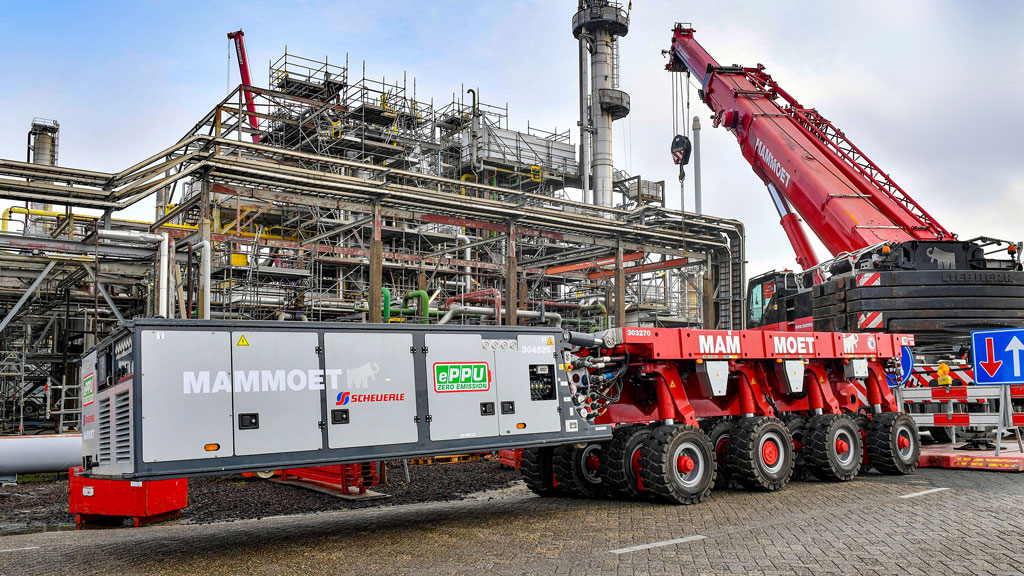UTRECHT, NETHERLANDS—Mammoet, a Netherlands-based heavy equipment transport company, has announced the commissioning of what it says is a world-first electric-powered heavy transport vehicle.
The new electric-powered self-propelled modular transporter (SPMT) has been put in production at a Shell chemical plant in the Netherlands. The Shell facility produces feedstock for a range of applications including medical equipment, car components and cellphones, stated a recent release.
When a key production vessel needed to be replaced, the customer was keen to look at how this could be done with the lowest possible environmental impact. Mammoet has been working in partnership with Scheuerle to transition its SPMT fleet from diesel to renewable energy.
SPMTs are a special electrification challenge because of the force required to move heavy items, the release stated. An electric power processing unit (ePPU) was used with four axle lines of SPMT operating in an extremely tight area of the existing plant, which meant there were only a few metres in which to manoeuvre the existing vessel out and drive the new one into position.
Space was so limited, the release explained, that not all SPMT lines could be positioned beneath the outgoing vessel, meaning it needed to be secured above the front two axle lines of the SPMT, with the ePPU acting as a counterweight to balance the vessel as it was transported.
A crane was then used to remove the old vessel and lower its replacement onto the SPMT in the same position. This was then moved back into place ready to be installed and commissioned.
“The ePPU is a really important step in how we support our customers with decarbonizing projects,” stated Ludo Mous, operations director at Mammoet Europe, in a statement. “But in this case, the benefits were not limited only to a lower carbon footprint. With work taking place in a highly confined area, we would have been highly conscious of the emissions generated by a typical diesel PPU, and would need to carefully manage operatives’ exposure to it.
“By using an electric model, we removed this issue completely, while also creating a much quieter working environment.”



Recent Comments